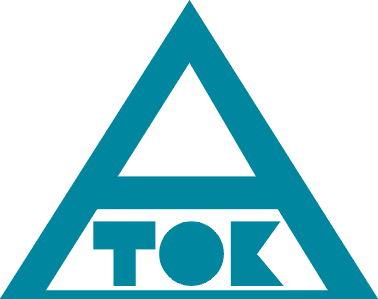Last year, there was an increase of over 65,000 m² in retail park space in the Czech Republic, which now has more than 1,100,000 m² of retail park space overall.¹ This was the biggest growth in five years, but it was also centred on the smallest number of projects. Retail parks now tend to be viewed as the winners of the coronavirus crisis – and their popularity and success has endured.
They continue to reap the dividends of shopper interest, low vacancy rates driven by tenant expansion and lengthy leases, and a surge of interest among investors. While higher costs are now slowing the construction of new retail parks, this will only boost demand for space in them and likely push up rents as well.
Last year, more than 65,000 m2 of retail park space was completed across 14 projects (whether new builds, refurbishments, or expansions) in the Czech Republic. This is the largest increase in the last five years, with 36% of the growth attributable to the new Aventin Jihlava project’s 23,700 m² of retail space, the rest comprising smaller retail parks.
Jan Čížek, Head of Retail Warehousing team, Cushman & Wakefield: “At the moment, most construction is concentrated in smaller towns with a population of up to 40,000. These are often smaller projects of no more than 10,000 m². The reason for this is that much of the market has already been well saturated in previous years: now that the regional towns have their large projects in place, developers are looking beyond them and building smaller retail parks. Here, too, tenants are showing interest, so developers are not having any major problems renting them out.”
Table 1: Newly completed retail parks, 2017-2021
| Year | Retail space | Number of projects² |
| 2017 | 41,600 | 16 |
| 2018 | 52,600 | 22 |
| 2019 | 56,500 | 15 |
| 2020 | 62,700 | 25 |
| 2021 | 65,000 | 14 |
Minimum vacancy rates resulting from expansions
Towards the end of last year, retail park construction slowed down in the face of soaring construction costs. While projects already under way were completed, some of those that had originally been slated for this year were pushed back to 2023 or 2024. This could prove to be an opportunity for existing projects, as space is in high demand among tenants, with those in the home furnishings sector in particular – kitchenware retailers, bed and mattress stores, pet supply stores – looking to expand. Discount clothing and houseware stores are also thriving. These primarily target retail parks and are always scouting for more locations where they can set up shop. Food supply chains are also very active. They are expanding their portfolios by increasing the number of stores in both the supermarket and hypermarket formats.
As a result, vacancy rates at retail parks are now at minimum levels, i.e. below 1 per cent of the total area, so it is safe to say that the market is effectively at full occupancy. With lease contracts here being entered into for longer periods of 10 or 15 years and the rate of construction projected to fall, vacancies are becoming a rarity.
Jan Čížek, Head of Retail Warehousing team, Cushman & Wakefield: “The scarcity of rental space will obviously translate into higher rents. Landlords will be the ones dictating prices in the period ahead. They will also have to factor in the higher costs of building their projects. This makes hikes in rental prices inevitable.”
Demand for efficient shopping is driving spatial optimisation
During the coronavirus crisis, there was a change in the Czech population’s shopping patterns, with retail parks gaining in popularity. People got used to shopping less often, but more efficiently: what they wanted was a short drive to somewhere where they could get everything done quickly and in one place, without having to navigate arcades and shops they had no real need for. Today, they continue to prefer retail parks’ smaller concentrations of people, outdoor parking, and minimal amounts of shared indoor spaces.
Food supply chains, sensitive to changes in customer behaviour, have also turned their attention to making shopping more efficient. Supermarkets are optimising their size, thus opening up new space on the market that expanding or new tenants can tap into. To some degree, this is making up for the lack of new construction: what were originally hypermarkets complemented by arcades that host several stores are becoming additional retail parks.
Sales of retail parks accounted for the majority of retail transactions
Footfall and turnover in retail parks are on the rise, with rents also expected to climb on the back of growing tenant-driven demand and slowing construction. Naturally, this trend has also caught the attention of investors, who have shown an increasing interest in retail parks in recent years. Until 2019, the share of these transactions in retail real estate investments had always hovered around 20 per cent of the total number and usually less than 10 per cent of the value of the total volume of these deals. In 2021, however, retail parks accounted for 56 per cent of the number of retail property deals and 51 per cent of the volume.
Table 2: Investment in retail parks as a share of total retail investment
| Year | By number of transactions | By volume of investment |
| 2017 | 21% | 4% |
| 2018 | 26% | 19% |
| 2019 | 21% | 9% |
| 2020 | 38% | 22% |
| 2021 | 56% | 51% |
Looking at the developers, more than 40 per cent of the market is covered by the three largest: InterCora, CPI Group (whose portfolio has doubled following the acquisition of Immofinanz assets), and Saller Group.
1. The calculation of this space excludes the area of supermarkets, DIY and home improvement stores, and large furniture stores. Retail parks smaller than 1,500 m² are also excluded.
2. The number of finished projects encompasses both the completion of new parks and the refurbishment and expansion of existing parks.
Source: Cushman & Wakefield
Prague, June 28. 2022









